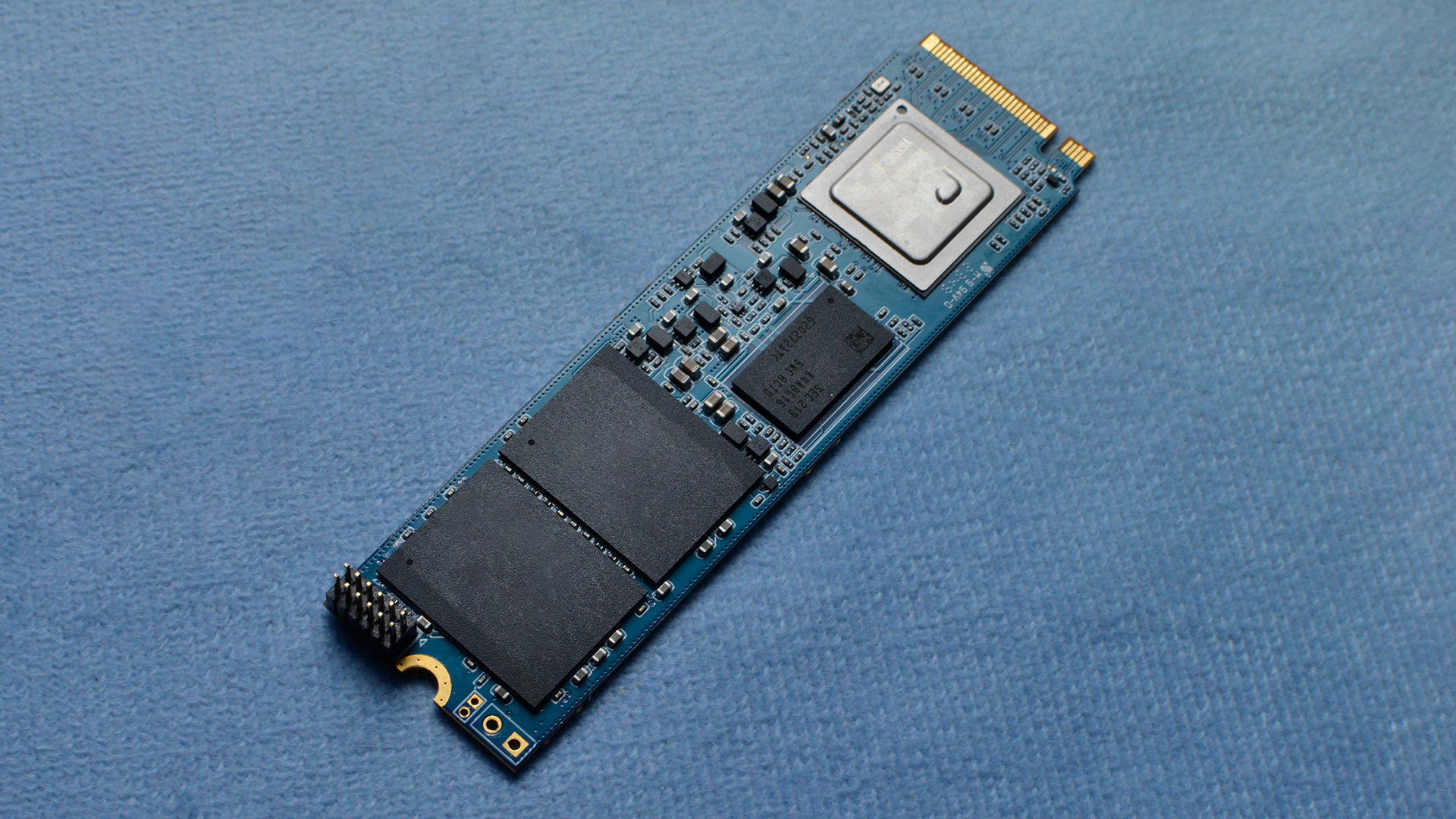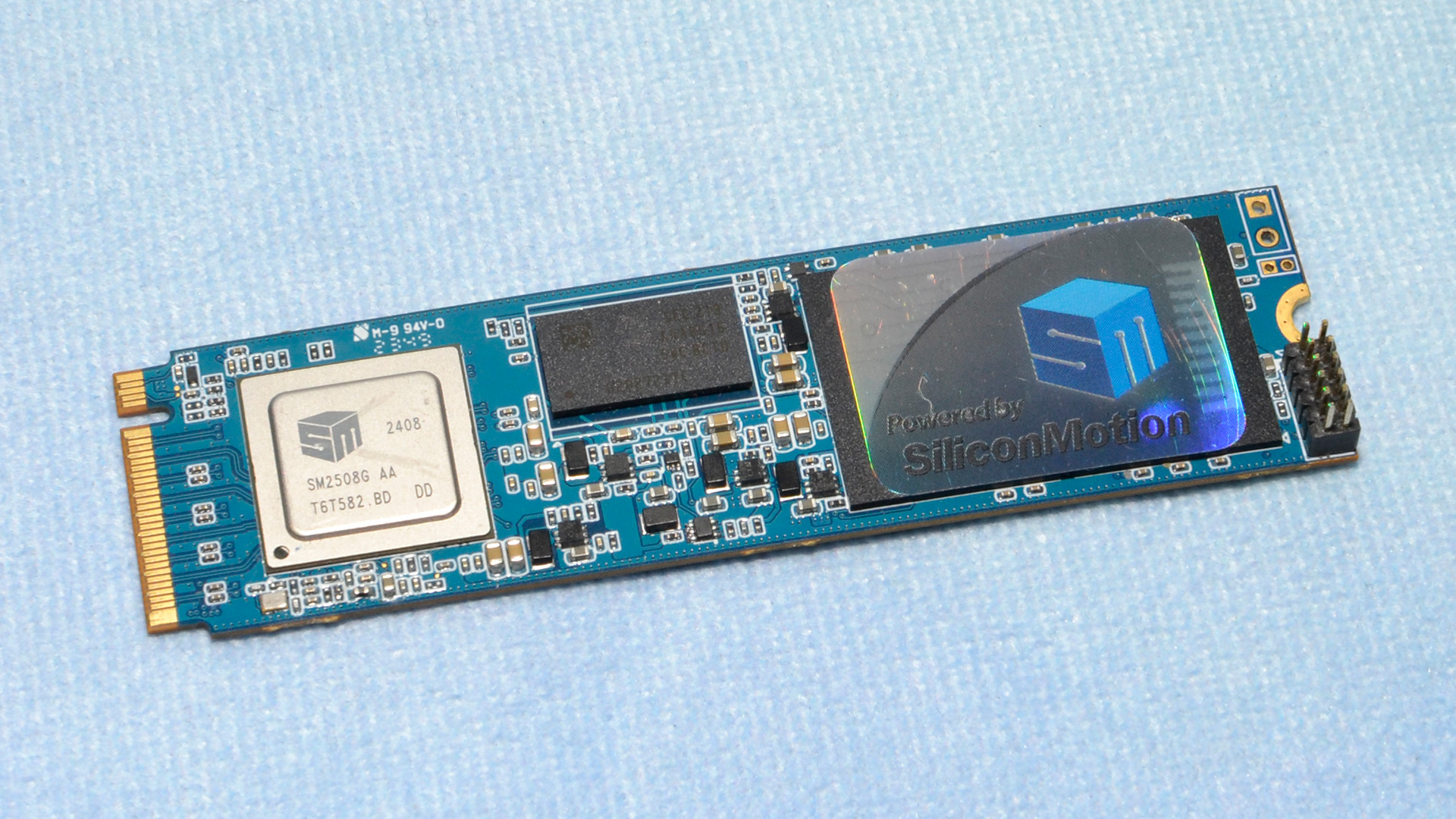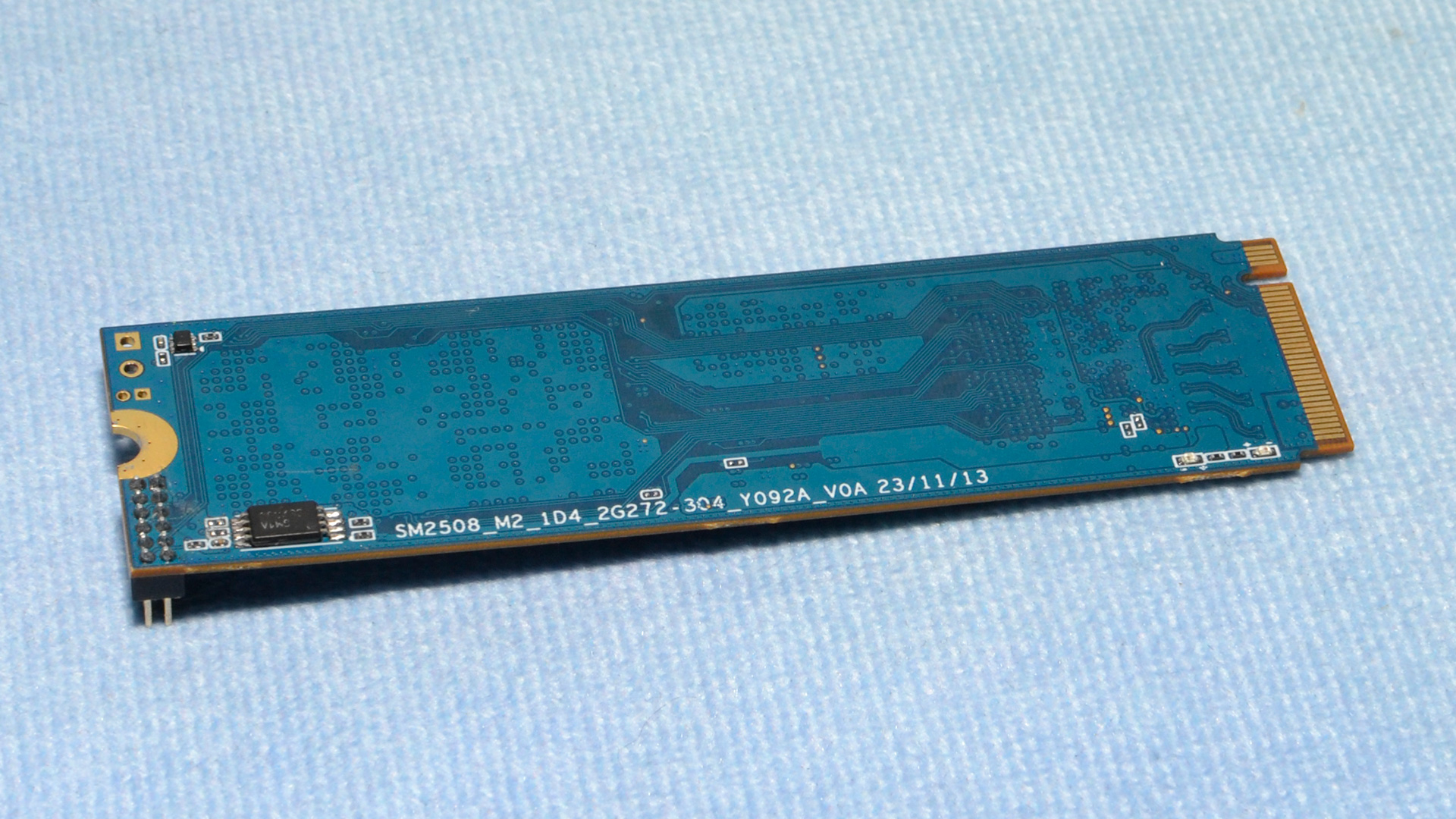Tom’s Hardware Verdict
Silicon Motion’s SM2508 SSD controller is a triumph, providing the fastest PCIe 5.0 performance possible for an SSD with excellent power efficiency. All we need now is 2TB and 4TB retail drives.
Excellent sustained and all-around performance

Exceptional power efficiency
Only a 1TB sample

Not available at retail yet
Why you can trust Tom’s HardwareOur expert reviewers spend hours testing and comparing products and services so you can choose the best for you.Find out more about how we test.

Features and Specifications
The day is finally here: Silicon Motion’s SM2508 PCIe 5.0 controller arrives as a real challenger to Phison’s high-end SSD dominance. The company has arisen from the ashes and intends to make SSDs cool again, with a focus on power efficiency while delivering the highest performance possible. When it arrives in retail form, we expect drives using the SM2508 to rank among thebest SSDs. You no longer have to accept any compromises.SMI’s controller has been in the works for a long time, and it was first shown off over two years ago. Roadmaps can be fickle, but the possibility of a 6nm PCIe 5.0 SSD controller tickled the imaginations of storage enthusiasts who have since been critical of Phison’s E26 controller. Make no mistake, what Phisonachievedwith its controller is nothing short of game-changing. It gets an incredible amount of performance out of its 12nm design and has actually been available in many products at not-insane (but still very high) prices. But these E26-based SSDs consume a lot of power, particularly at idle, and generate quite a bit of heat, as evidenced by the use of active cooling on the reference design.InnoGrit’s similarly laggard IG5666 controller showed similar compromises, as recently reviewed in theAdata Legend 970 Pro. While InnoGrit beat SMI to market, the IG5666 is at best a sidegrade to the E26, as it uses even more power and currently idles at around 5W — 87% higher than the already poor E26. It also failed to beat the top E26-based drives in most of our performance metrics. Its presence in the market may help lower prices and bring increased competitiveness to the PCIe 5.0 SSD realm, especially since the IG5666 needs to be a more affordable solution to make sense against already-existing SSDs like theCrucial T705orSabrent Rocket 5.That leaves the door open for some compelling products built on the SM2508, and even at a premium they would be an easy sell given the advantages of the technology. We’ll get into that more in a moment, but we received a preview reference design 1TB sample direct from SMI for testing and review. If you could buy this drive right now, it already shows a lot of promise.Surprisingly, this is true even when comparing this 1TB drive against the 2TB competition, as the flash used on our sample has ample interleaving to deliver quite a lot of performance for such a lower capacity SSD. It’s also efficient enough to be run without a heatsink. These are two new characteristics for high-end PCIe 5.0 SSDs. You really need 2TB to get the most out of the E26 with the flash it uses, and a heatsink is basically required.The SM2508 could remove the final barriers for those waiting on the sidelines for the right high-performance PCIe 5.0 drive. It also helps demonstrate that upcoming budget drives have the potential to work great in laptops without compromising on performance, and even in PCIe 4.0 slots these SSDs could be worth using.In short, this is exciting technology that helps move the ball a bit further down the field. Superficially, it doesn’t appear to be game-changing — you may already achieve close to this level of performance with Phison E26-based drives — but it gives a glimpse into the future of SSDs. Enthusiasts also may not care that much about power draw, but cooler and more efficient hardware is always welcome at the end of the day. We look forward to seeing what third-party SSD manufacturers come up with based on the SM2508, as our preview sample is rather limited, but we can already see significant potential in the hardware.
SMI SM2508 Specifications
As this is not a retail drive, this will be more of a preview rather than a standard review, similar to what we did with thePhison E26 Max14um. More importantly, it gives us a good idea about what to expect with retail SSDs built on this reference design.The capacity range should match what we’ve had with the Phison E26 controller so far, which is to say 1TB, 2TB, and 4TB. We generally recommend going with 2TB or larger drives at this performance level in order to get the most out of the hardware. Starting at that capacity, the SM2508 can hit up to 14.5/14 GB/s for sequential reads and writes and up to 2.5M/2.5M random read and write IOPS. That’s potentially higher maximum write performance and more IOPS from drives built on this controller in comparison to the E26-basedCrucial T705and others.We don’t have any details on what’s expected for the warranty, but it’s safe to assume it will be the standard five years. For write endurance, the TBW is unknown and could vary from brand to brand. Normally we would expect at least 600TB of writes per TB capacity. The SM2508 controller also optionally supports TCG Opal 2.0 for hardware encryption and NVMe-MI for storage management. The former is optionally supported on the Phison E26 as well, while the latter is more of anenterprisefeature.
SMI SM2508: A Closer Look
We received a 1TB engineering sample (ES), its purpose made obvious with the debugging pins, and the drive is effectively single-sided. This differs from 1TB drives based on Phison’s E26 controller, like theNextorage NE5Nand theGigabyte Aorus Gen5 12000, which are double-sided even at this capacity. This isn’t a huge deal, although some devices only support single-sided drives and such drives can be easier to cool.Prior to now, it would be out of the question to use a high-end PCIe 5.0 SSD in something like a laptop, but the SM2508 is very efficient and such a thing is theoretically possible. It will be interesting to see if the efficiency is maintained with 2TB and 4TB SKUs.The SM2508 controller is the first one we’ve tested that uses a process node smaller than 12nm. A smaller process effectively improves power efficiency, often to a very significant degree. SMI’s SM2508 is built on TSMC’s N6 6nm FinFET process, unlike the 12nm Phison E26 and InnoGrit IG5666, giving it a big power use advantage.Make no mistake, the SM2508 is still a powerhouse — it’s using four ARM Cortex-R8 cores running at over 1.2 GHz with a single Cortex-M0 on the side. Most other designs we’ve tested are still using the Cortex-R5, which to be fair has many similarities, down to only one primary core for even relatively fast DRAM-less solutions. But just as TSMC N7 and N6 have helped reduce power use and improve performance with CPUs and GPUs when compared to older 12nm designs, the same benefits apply to SSD controllers.The SM2508 is also future-proofed by being able to run a bus rate of up to 3,600 MT/s for each of its eight channels. More channels means more interleaving and potentially more flash. A fast I/O rate means that high speeds can be reached more easily with the right flash, and also that not yet released flash should work well with the controller in the future.As an example, this controller would have no problem with Kioxia BiCS8 flash. It can also handle Micron’s upcoming flash generation without any problem. That said, such bus speeds are probably more exciting with four-channel budget controllers, as SSDs built on 6/7nm controllers and upcoming flash will be incredibly efficient for their relative performance level.We could dive into the technical details more, but it will be better to wait until drives with this controller are on the market. Right now, this sample uses Kioxia’s 162-Layer TLC flash (BiCS6), which we have seen before. It’s been used to good effect in theCorsair MP600 Elite,Sabrent Rocket 4, and in the M.2 2230 form factor with the updatedCorsair MP600 Mini. This flash is reasonably power-efficient and performant, but for a drive of this caliber it needs to use 512Gb rather than 1Tb dies to get maximum interleaving. Ideally you would still want at least 2TB of flash to fully stretch the drive’s legs, but 1TB will have to do today, achieved with two 8DP NAND flash packages at 512GB a piece.We can hypothesize about why Silicon Motion only sent a 1TB sample. The 2TB might use more power to where it requires a heatsink for heavybenchmarking. Or, it could be using 1Tb dies instead, which would put its performance level pretty close to what we see here. If so, a 4TB sample would be optimal for showing the full potential of the hardware. Or perhaps SMI plans to use different flash in the future. There are a lot of possibilities. Whatever the case, the 1TB sample shown here will be more than enough to represent the technology, as we’ll show in a moment.As a final note, there’s 1GB of DDR4 supplied on the PCB, which is ample. Many E26-based drives have double the usual ratio but in some respects less is more. More memory means more cost and potentially higher power usage. The raw speed of the memory is also not super important as the main advantage of dedicated RAM is the low latency. And as for power savings, the SM2508 is capable of using LPDDR4 as well, but in the grand scheme of things it’s better to have DRAM than not on a high-end drive.
MORE:How We Test HDDs And SSDs

MORE:All SSD Content
Current page:Features and Specifications
Shane Downing is a Freelance Reviewer for Tom’s Hardware US, covering consumer storage hardware.